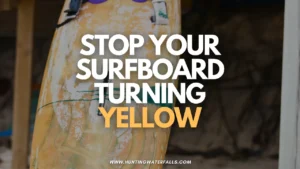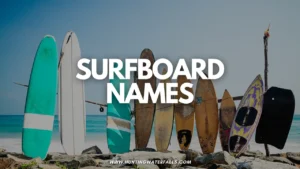If you are a newbie to paddle boarding, knowing which way to face on a paddle board is a valid question that has a big impact on being able to paddle board successfully..
It’s a common mistake for beginners to stand backwards on their paddle board or use the wrong side of their paddle until they get familiar with their equipment and its orientation.
You know your paddle board is backwards if the fins or the legrope attachment is at the front of your board. Always make sure the fins and legrope attachment are behind you. Also, paddle boards tend to be narrower at the front, going to a rounded point and tilting slightly upwards, while the back tends to be wider.
We call this the nose since it slightly tips up. Standing up on your paddle board the wrong way and trying to move forward increases your chances of falling since you will be paddling against the fin, which can turn your board against your will.
This isn’t to say that you can’t paddle backward, but you would do this with a reverse stroke while facing your board’s nose (a more advanced technique, but not too difficult once you know what you're doing).
It’s essential you know how to stand correctly on your SUP and get familiar with the anatomy of the board before trying to reverse paddle.
The Basic Anatomy Of A Paddleboard
If you’re a beginner, before you get into doing the fancy stuff like reverse paddling it’s important you know the basic anatomy of a paddle board.
Knowing this is key to ensuring you’re also standing on your SUP the right way.
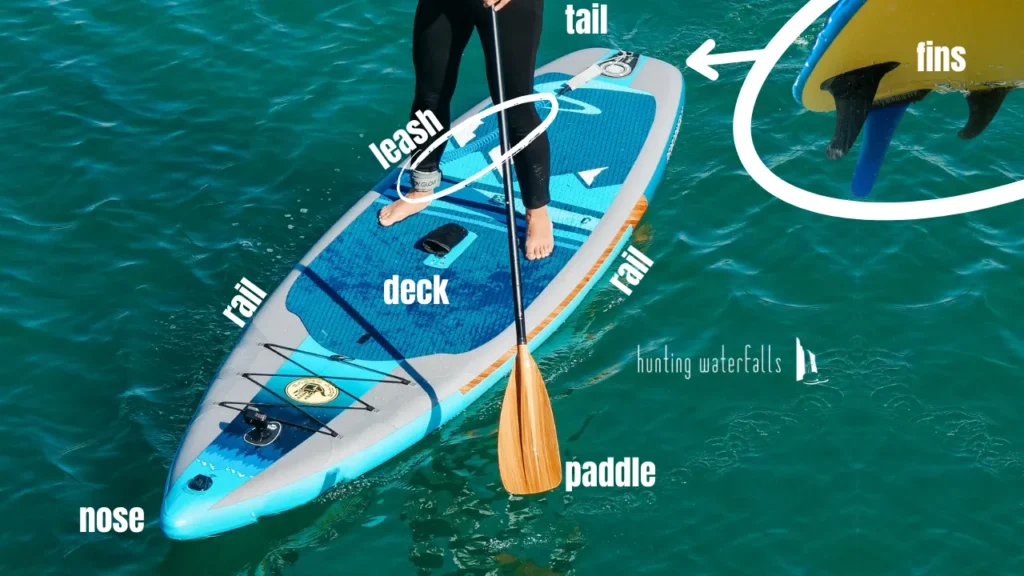
- Nose – The nose of your paddle board is the front of the board. It comes in different shapes and adds stability to the board. You can find some boards with the curve facing upside down. These are used mainly for racing. But most paddle boards will be thinner at the nose than at the tail.
- Tail – This is the back of the board, and like the nose, it comes in various shapes for stability. The tail is usually wider than the nose and does not curve upwards.
- Deck – Located in the center of the board, where you stand. The deck often extends towards the back of the board which is another way you can tell the board’s orientation and whether or not you’ve facing backwards or forwards.
- Rails – These are the sides of the board, going from nose to tail.
- Fins – Fins jobs are for helping with tracking your board, which means going in a straight line. Fins appear underneath the board and always at the rear.
- Leash/Legrope – This is at the rear end of your board where the leash plug is and attaches to your leg so you don’t lose your board if you fall off.
- Paddle – Your paddle is the long stick you use with a blade either end, it helps you propel your board across the water.
- Power Face – Power face is the side of your paddle which curves towards you, known as the front side. It’s named power face side since it pushes the water away from you, moving the board forward with each stroke.
How To Know If Your Forwards Or Backwards On Your Paddle Board

There are a few quick checks you can do to know the orientations of your paddle board and to make sure you have it pointing forwards and not backwards.
The Fins Should Be At The Back
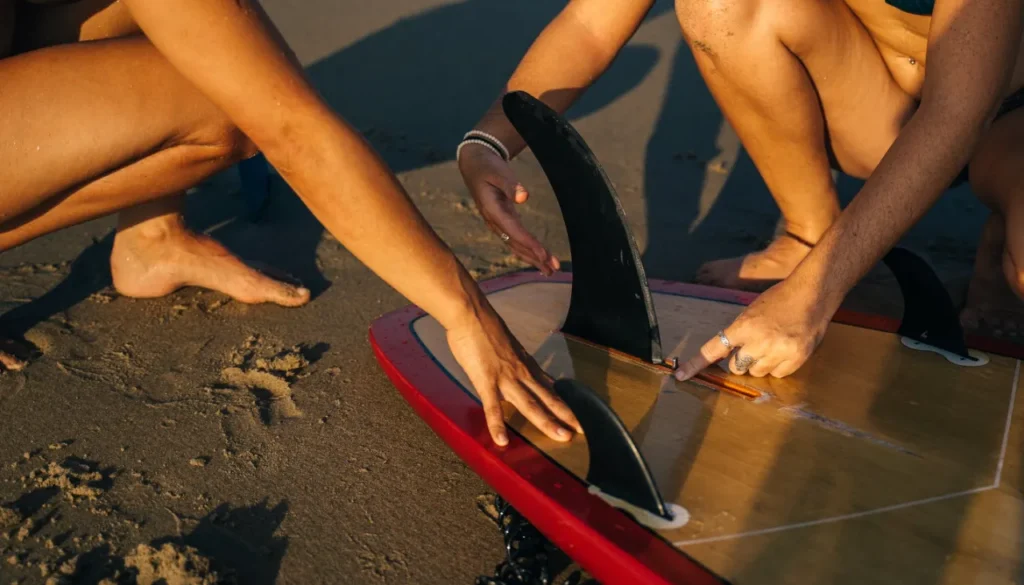
The paddle board fins are underneath your board and are ALWAYS situated at the back of the board.
These help you to track straight as your paddle and give you control over your board.
On the shore you can simply check for the fins to know the orientation of the board.
If you're already on the board it is more difficult to check without going for a swim or feeling under the board.
The Leg Rope Attachment Should Be At The Back
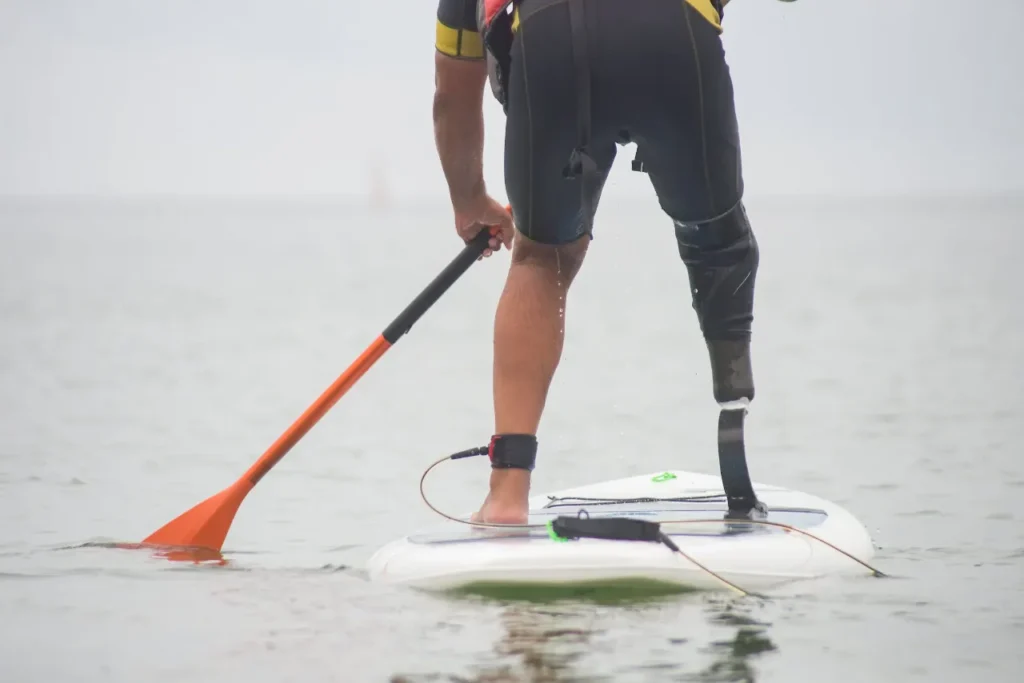
The leash (or leg rope) attaches around you ankle or calf and runs to the leash plug.
The leash plug is always situated at the rear of the stand up paddle board.
So simply look for where your leash connects to your board and you know that this is the back, or the tail or your board.
The Deck Extends Towards The Back Of The Board
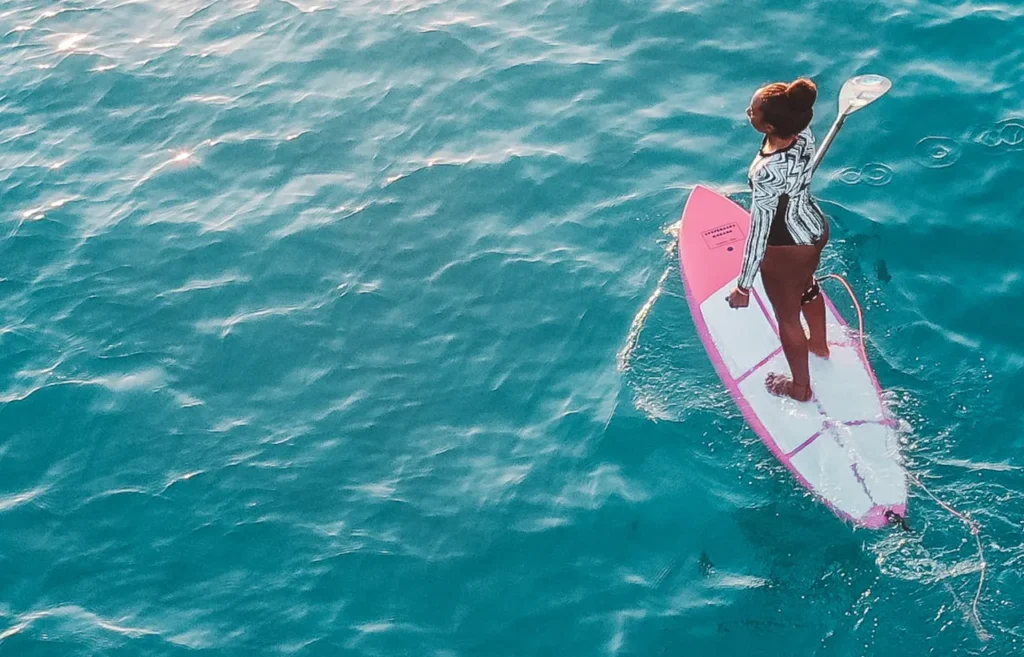
Paddle boards often have large areas of grip on them, which is known as the deck.
The deck is usually focused towards the center of the board but is also situated towards the back of the board as you often stand on the back of the board when catching waves.
There is rarely grip on the front of the board so this can help you to orientate the front from the back.
The Nose Is Narrower Than The Tail and Points Upwards
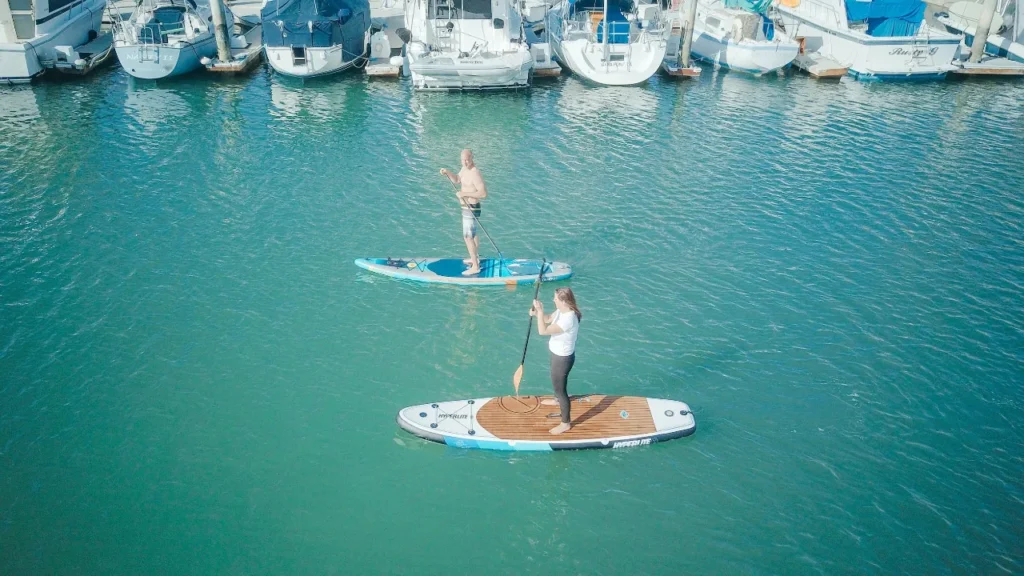
On almost all paddle boards the nose of the board (the front) is narrower than the tail of the board (the rear).
The nose also tends to curve upwards slightly, helping you to travel over the water easier. While the tail of the board does not curve upwards.
Why Does Paddle Board Orientation Matter?
The way your paddle board is facing plays a major role in how easy it is to control your board.
The front of the board is narrower and tilted upwards to make passing over the water easier but most importantly the fins are orientated at the back of the board.
If the board is the wrong way around and the fins are at the front, not only will the fins be backwards but they will force the board to turn around as your paddle making it extremely difficult to track (or move forwards) in a straight line.
How Do I Know If I’m Holding My Paddle Backwards?

Holding your paddle backward is another common beginner’s mistake, and it can create a lot of drag when paddling.
The direction you need to hold the paddle is a bit counterintuitive.
There are two sides to your paddle, the power face and the backside.
When holding the paddle you want the paddle to be bent away from you towards the front of your board. So if the handle of the paddle was pointing straight up and down then the paddle itself would be bent forwards towards the nose of the board.
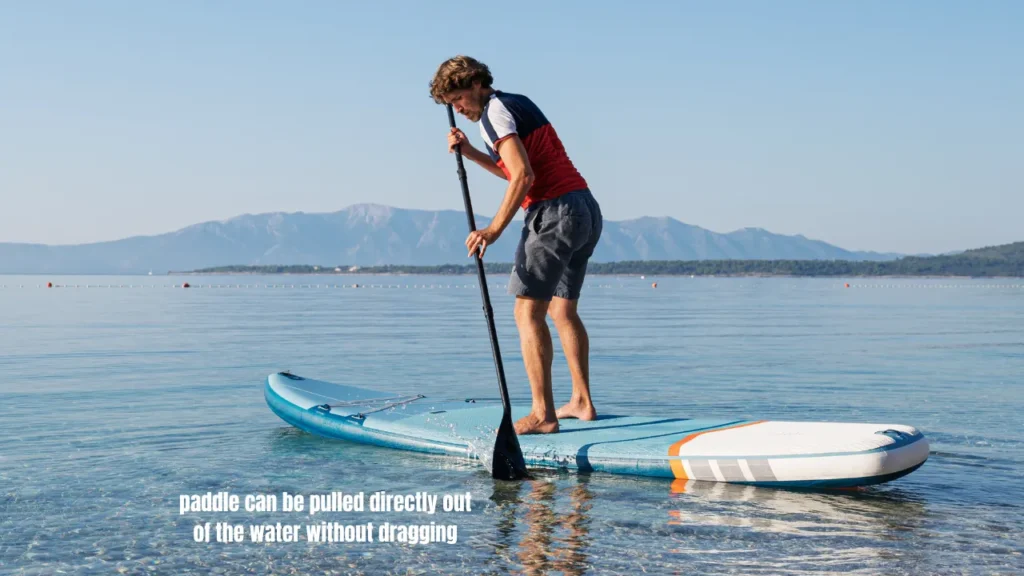
This allows you to reach out further in front of yourself with the paddle to get a longer stroke and it also allows you to pull the paddle out of the water easier without lifting up a lot of water in the process.
See the video below for a great explanation:
To hold your paddle on the front side, make sure you are holding the spoon shaped side below the canter with the curve facing towards you.
The curve is not as extreme as some kayak paddles so it can sometimes be difficult to recognize. If you have the blade the wrong way around it will likely flutter back and forth in the water as you make your strokes and will likely hit the rail.
The backside of the paddle (the part you're NOT meant to paddle with) has the concave curve facing away from you.
How Do You Go Backwards On A Paddleboard?
When we talk about going backward on a paddleboard, we typically mean reverse paddling or performing a reverse sweep stroke which is used to turn the board around while you are traveling forwards.
If you want to go backward or reverse paddle with your paddleboard, first, make sure you’re standing the right way with the fin and leash at the rear end.
Looking backward, take 1-2 light strokes on each side, being very careful not to be too harsh. Otherwise, the fin will turn your board. To keep in a straight line, ensure your wrists are stacked.
Generally you can only paddle backwards for a few strokes before your board will want to turn itself around and it's not very efficient. It's only used in some rare circumstances and usually it's much easier to simply turn your board around and paddle forwards instead.



